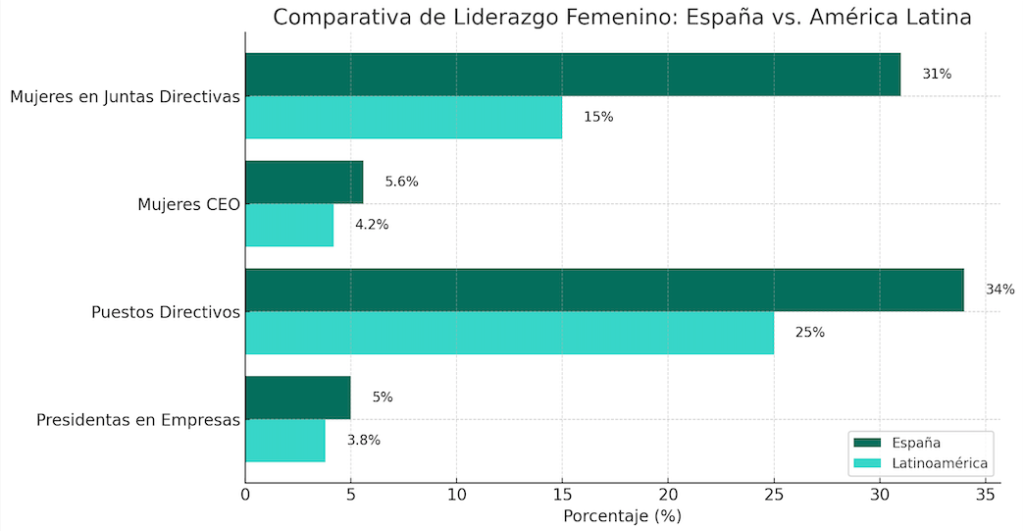Fewer women at the top: female leadership is declining 🔴
We are reading about it in various publications following Grant Thornton's Women in Business report. Below is an analysis of the situation in Spain and Latin America to reflect on what we can do to change this reality.
The figures confirm it: in Spain, the number of women in CEO positions has fallen dramatically, and in Latin America the gap remains huge. It is not just a question of getting there, but of staying in leadership positions.
Why do many highly skilled women leave these positions? The “loneliness at the top” and the lack of support networks play a crucial role. If we do not address this problem, we will continue to see the numbers decline year after year.
1. Representation in executive and CEO positions
-
Spain:
-
In medium-sized companies, female participation fell from 40% to 38.4% in the last year.
-
CEO positions have decreased from 26.7% to 19.3%.
-
Although the percentage of female presidents rose slightly to 4.5%, it remains very low.
-
-
Latin America:
-
In publicly traded companies, on average, only 14% of board members are women, and only 4% of CEO positions are held by women.
-
In the private sector, around 25% of management positions are held by women, and only 17% of companies have a woman at the helm.
-
The challenge goes beyond “reaching” leadership: it is vital to be able to “maintain” it and climb steadily.
2. Concentration by area and sector
-
Spain:
-
Women are concentrated in areas such as human resources (47.5%), marketing (34.5%), finance (33.2%), and operations (30%).
-
-
Latin America:
-
There is a greater female presence in traditionally “female” sectors such as health, education, and social work.
-
In contrast, male-dominated sectors—such as manufacturing, technology, and finance—show a notable shortage of women in management positions.
-
In both territories, women's advancement is limited by occupational segregation.
3. Structural and cultural barriers
-
Spain:
-
The recent decline in the representation of women in leadership positions shows that, despite the progress made over the last decade, there are still barriers to maintaining female presence in corporate management.
-
-
Latin America:
-
Structural barriers and cultural stereotypes prevent women not only from accessing high-level positions, but also from advancing in them. The “broken ladder” (the broken rung) limits women's continued advancement.
-
